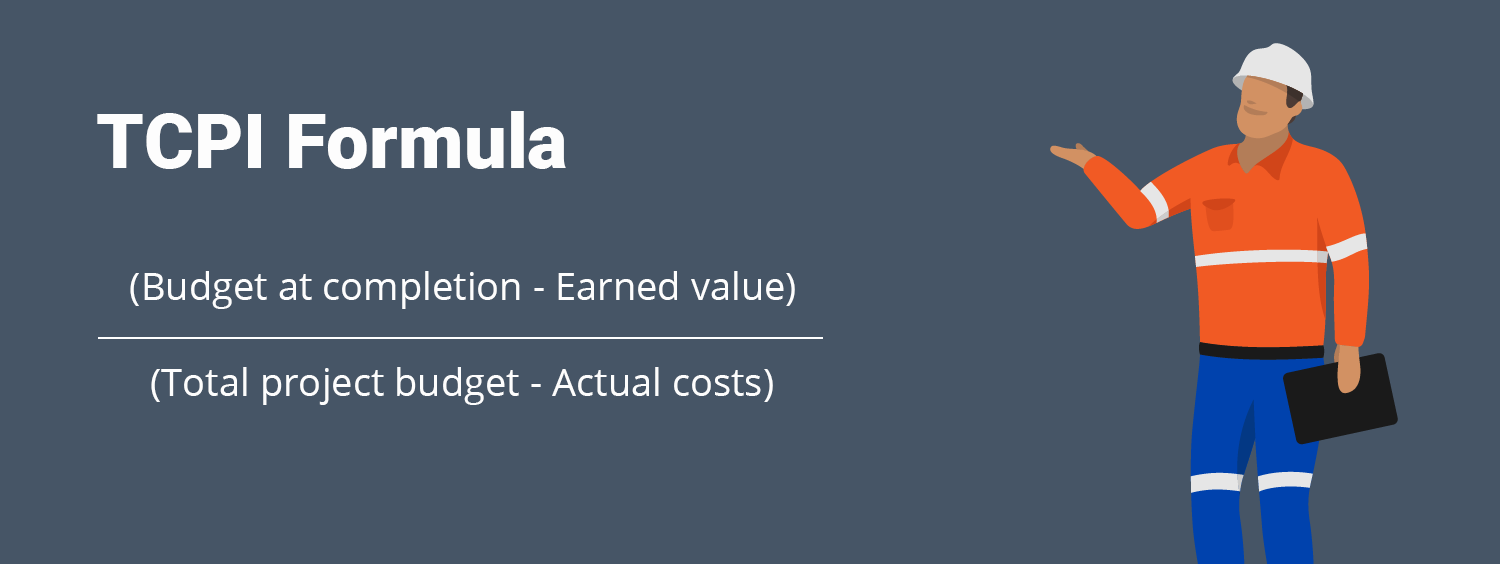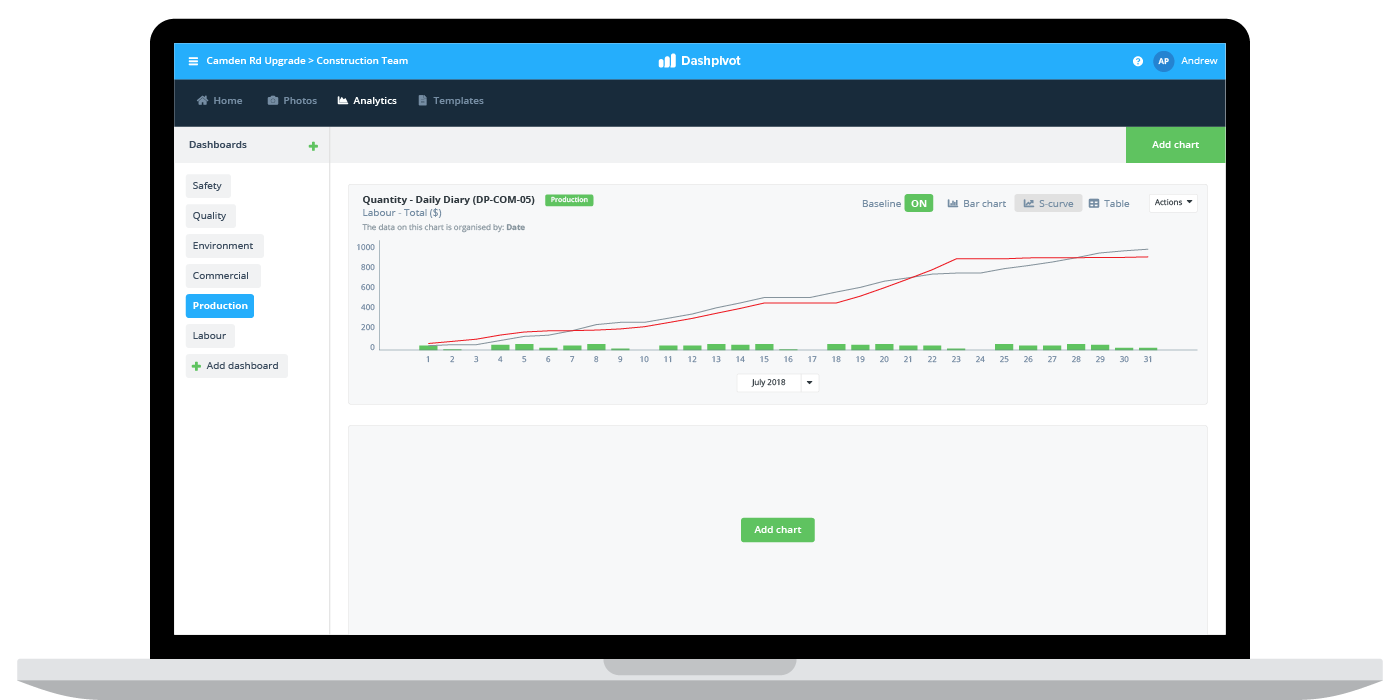TCPI formula – To complete performance index

TCPI Formula: To Complete Performance Index
What is the 'to complete performance index' or TCPI?
TCPI or the to complete performance index is one of the more recent additions to the project management and earned value management arsenal.
While new and sometimes confusing to project managers new and old, the concept of TCPI is well aligned to the other concepts and formulas inside of EVM - and will feel familiar to anyone who has worked with these formulas:
The to complete performance index or TCPI is the calculated index which must be achieved on the rest of the project or remaining work to meet a specific goal - such as the initial budget at completion (BAC).
Another way to think about TCPI is that it defines the cost efficiency required over the rest of the project to finish within the original or revised and approved budget.
As an example of what this definition actually means, imagine that we are behind schedule on a project because we have been moving slowly. The to complete performance index enables us to calculate how much faster we need to move for the rest of the project to complete it within the allotted schedule.
There are many useful earned value management formulas, but many of them are used to forecast what the outcome will be from our current inputs or performance to date.
For example, the cost performance index of a project measures the current cost efficiency of the project to date. It tells us how we have performed so far, and gives us a number which we can use to forecast our new estimate at completion. But what if we can improve our cost efficiency and bring the project back on schedule and on budget - that's the point here right?
Our TCPI formula is our required future cost efficiency.
The TCPI formula is very useful because it enables us to understand the input and efficiency required to achieve our goal.
The TCPI formula
There are in fact two TCPI formulas which we need to be aware of. The first TCPI formula is most often used when we are under budget and adhering to the initial total project budget - so this is the one which you hope you are using.
In this case, our TCPI formula will include our budget at completion on both sides of the formula.

When we are over budget, or when the project is expected to experience some major disruptions which will effect the initial project budget - the project budget may be revised.
A revised project budget based on previous performance or expected future issue gives us a different measure: estimate at completion.
The second of our TCPI formula's pulls from this metric, replacing the BAC on one side of our equation - as illustrated below.
This gives us a to complete performance index based on the new budget for the project - as that is the new 'goal' for which we need to perform and achieve.

If you need a little more context on any of the acronyms or metrics included on our TCPI formula, we have plenty of helpful articles here.
Using the TCPI formula when using a new EAC
The best way to understand the TCPI formula and it's use is to look at some 'real world' examples of how it/they would be used.
Let's first look at our second TCPI formula - which arises when we have a new estimate at completion because we are over budget to date. This is an all-too common scenario which project managers and project-based companies need to find solution for and better plan for.
For this example, let's assume we are building a bridge. The total project budget for the bridge is $10,000,000 and the project is scheduled to last 2 years.
After 1 year of the project schedule has elapsed, we are charged with calculating and sharing our to complete performance index.
After 1 year, we have spent $5,500,000 and are 45% of the way through the project.
We can't simply plug these base numbers into our TCPI, but we can use them to get the numbers we need to the equation.
Firstly, we know our BAC is $10,000,000.
We also know our actual costs (AC) to date are $5,500,000
Our planned value (PV) can be easily calculated = 50% (% through project) x $10,000,000 = $5,000,000
Our earned value on the project so far = 45% (% actual through the project) x $10,000,000 = $4,500,000
With our earned value known, we can calculate our CPI (not our TCPI yet) = EV/AC = $4,500,000 / $5,500,000 = 0.818
Because our CPI is under 1, we are over budget - which we could see from the numbers. We can now use this index to create our new estimate at completion, which will be discussed and approved by all of the neccesary parties.
Our new estimate at completion or revised budget = BAC/CPI = 10,000,000/0.818 = $12,224,938
Now that we have our revised budget, we want to use the TCPI formula to figure out what our performance index needs to be for the rest of the project in order to stick to that budget.
TCPI = (10,000,000 - 4,500,000) / (12,224,938 - 5,500,000)
TCPI = 0.818
The fact that our TCPI is equal to our CPI in this case isn't a coincidence. Because the estimate at completion formula included our current cost performance index, it was 'saying' that if we continued at the same rate, what would the final budget or costs be.
Using the TCPI formula when sticking to the original BAC
The other TCPI formula is used when we are working towards our initial budget. It is often used when on budget and when the original budget looks accurate; and it can also be used when the project is over budget, but the client or another party is demanding the porject still be completed under the original budget.
The numbers and way of using this TCPI formula is very similar to the above, but we don't need to calculate or use a new EAC - because are sticking to our original budget (BAC).
Because of this, we simply replace the EAC number in the second half of the formula with another BAC.
We'll use the same example data from the above.
TCPI = (10,000,000 - 4,500,000) / (10,000,000 - 5,500,000)
TCPI = 1.22
In this case, our to complete performance index is 1.22. This means we must be much, much more efficient in the second half of the project to bring it back under budget.
There are of course a few variations of the examples we have shown above, but the core difference and only variable from the TCPI formula you need to be wary of is the EAC or BAC. If you are working towards a new budget, then you use EAC; if you are working to your original budget, then you use BAC.
Staying on track for project completion from start to finish
The purpose of the TCPI formula and all earned value management efforts are to help companies, managers and projects deliver on time and on budget.
While these theories, formulas and strategies are great for making informed decisions about projects, there are hundreds of other inputs which occur every day which companies need to focus on.
Understanding that you are over budget, or understanding that you need to become more efficient for the latter part of a project is crucial, but being able to improve efficiency is even more important.
Even the best project managers and best to complete performance index calculations fall short when the data being pulled in from site is insufficient or delayed - and even the most accurate TCPI of how efficient you need to be is relatively pointless if you are constantly inefficient.
Focusing on the inputs behind project delivery and the data being pulled into your TCPI formula and other key metrics is the real reason we are delivering late and over budget.

People in 100+ countries use this software to track work in real-time and do better project management from start to finish.
